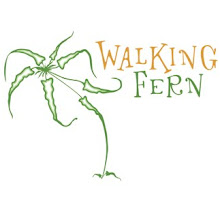Needle Felting Tutorial: Make a Toadstool Pincushion!
This toadstool pincushion makes an ideal beginner project as it requires only basic needle felting materials, incorporates several helpful techniques and you will finish with a lovely and handy item to use while working on future needle felting projects.
As a gentle reminder, felting needles are very, very sharp with many small barbs and a misplaced jab can be very painful indeed. For this reason, needle felting is not recommended for young children and care should always be taken. The best advice I ever received, which I pass along to you here, is always know where your needle is, and never take your eyes off it when it’s moving. ’Nuff said.
Your core wool is used to build the internal structure of your project, to which colour will be added in layers. Separate your core wool batt into two balls, roughly a 2:3 size split ratio (4 grams and 6 grams).
Starting with the larger ball of wool, compress the fibres as tightly as possible into an even, circular shape. The simplest way to accomplish this is to use your thumbs to roll the wool in upon itself, from outside to inside.
Using the foam pad as a base, grasp the top third of your needle securely and begin working the wool using a straight stabbing motion. Avoid jabbing on an angle or twisting... and keep your fingers well out of needle range!
Continue to work the wool evenly on all sides, turning as you create a rounded dome. Leave a small tuft of unworked fibre in the bottom centre. The fibres will compress as the needle’s barbs entangle the wool fibres.
Repeat the process with the smaller ball of wool. Try to make the shape round but somewhat conical, like a bulb of garlic. Leave the top centre portion unfelted; these loose fibres will be used to attach the pieces together.
Begin to assemble the base form. Place the loose fibres together, gently compress the form and begin working the joined area. Your objective is to work the loose fibres from the toadstool’s cap into the stem (and vice versa).
You will know the two pieces are joined when they can be gently tugged at without pulling apart in your hands. The form should now distinctly resemble a mushroom. Time to add the colour layers!
To prepare the red cap colour, pull the roving fibres apart between your hands, allowing them to separate where they will. Never cut your wool; the harsh edges made by scissors/blades are unsightly and don’t felt well.
Working in a circle, affix the roving onto the cap using a similar stabbing technique, only do not jab quite as deep. Any bumps will smoothen out with more needle work and bare spots can be filled with additional bits of colour.
Colour edges can be refined by carefully positioning the fibres with the tip of the needle before plunging the barbed portion into the core. Be careful not to use too much force on the tip or bend the needle, or it will break.
Repeat the process, working in white from the red edge to the lower stem. You may elect to skip the white and just use the core colour, but using the white roving will give the piece a more consistent and finished look.
Create a solid brown layer around the base of the stem (don’t forget the bottom). Keep the brown section low on the stem, but don’t be overly concerned about having a sharp or even edge between the brown and white.
To create a colour blend, take small amounts of the two colours you wish to blend and begin to pull all the fibres apart between your fingers. Layer over each other and repeat until you can see the fibres have combined nicely.
Applying a strip of the new, blended wool between the brown base and white middle section will create a stem that appears quite natural. This will also hide any irregularities between the two solid coloured areas.
Create the first spot on the cap by securing a thin length of white roving at one end, then gradually working the fibres in a small spiral until a circle is formed. Repeat to create spots of different sizes in a random pattern.
Congrats... your toadstool pincushion is complete! Use it as an adorable – and safe – place to stick your needle(s) while working on felting projects. Be sure to keep those barbed sharps where you can see ‘em!
Hope you enjoyed this tutorial! Got questions or suggestions? Please contact me via www.walkingfern.com or post a comment below. Oh, and feel free to repost... but please give credit where credit is due... it’s just good crafty karma! Thanks and Happy Felting...
Labels: beginner, Etsy, fibre art, mushroom, needle felting, pincushion, project, roving, step-by-step, toadstool, tutorial, wool




























